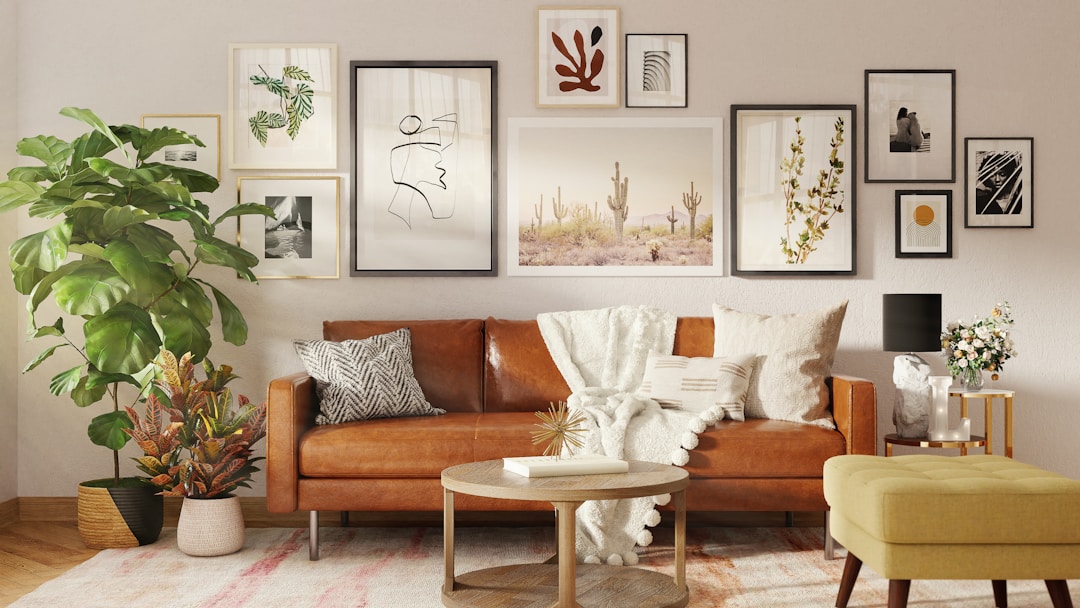Decorating a home is more than just choosing a few paint colors or picking out trendy duvet covers—it’s an opportunity to create a space that truly reflects who you are. But with so many different styles and design inspirations available, how can you hone in on what truly speaks to you? This step-by-step guide will help you navigate the vast world of interior design, ultimately leading you to discover your personal decorating style.
Contents
The Importance of Self-Reflection
Before diving into the world of fabrics, colors, and patterns, take a moment to reflect on your own preferences and personality. Think about places you’ve been that made you feel good, or homes you’ve visited that resonated with you. Were they cozy and filled with vintage finds, or minimalistic and modern? Your personal experiences can be the foundation for your home’s aesthetic. By understanding what you gravitate towards naturally, you’ll be better equipped to make decorating decisions that feel authentic to you.
Inspiration is Everywhere

Begin your journey by gathering inspiration. This doesn’t mean you need to start with an interior design magazine or a home decor blog, although those can be helpful. Look to your wardrobe, your favorite films, or even the landscape of places you’ve traveled. If your closet is filled with earthy tones and comfortable materials, maybe a rustic or boho-chic vibe with a complementary linen duvet cover would feel right at home. If you adore the ornate sets of period films, perhaps a more traditional or even vintage style is up your alley.
Consider the Architecture
Often, the structure and architecture of your home can provide cues about which decorating styles will work best. A mid-century modern home might not feel right with Victorian-style decor, and a historic Victorian home might clash with ultra-modern furnishings. While you don’t have to be tied down by your home’s architecture, considering it can provide a cohesive feel between the exterior and interior of your living space.
The Trial and Error Approach
No rule says you need to commit to one style forever. In fact, many homes feature a mix of different styles, creating a unique and personalized look. So, don’t be afraid to experiment. Buy that bold piece of art you’ve been eyeing, or try out a wallpaper pattern that intrigues you. If it doesn’t feel right, you can always change it. Remember, decorating is a journey, not a destination.
Seek Out Expert Advice
While discovering your personal style is, well, personal, there’s no harm in seeking out expert advice. Interior designers have a wealth of knowledge about different styles, trends, and how to make a space functional and beautiful. Even if you don’t want to hire a designer for your entire home makeover, many offer consultation services to help guide your decisions. A fresh perspective might help you see your space in a new light.
Mood Boards: Your Design Compass
A mood board is a tool that can help you visualize how different elements come together in a space. Whether you’re using digital tools or going old-school with magazine clippings, mood boards allow you to curate colors, furniture pieces, textiles, and decor items to see how they complement each other. If something doesn’t fit or feels out of place, it’s easier to swap it out on a mood board than after purchasing and placing it in your home.
Functionality Over Form
While aesthetics are important, the functionality of a space is paramount. Think about how you use your home. Do you need a quiet space for work? A play area for children? Room for entertaining? Your lifestyle should inform your decorating choices, ensuring that your home isn’t just beautiful but also suits your everyday needs.
Understanding Your Color Palette
Colors play an integral role in setting the mood and atmosphere of a space. Some people find solace in soft, muted tones that exude tranquility and peace, while others are invigorated by bold, vibrant shades that make a statement. Reflect on the colors that resonate with you the most. Do you prefer a monochromatic scheme, or do you thrive in spaces that boast a myriad of colors? Delve deep into understanding not just the colors you like, but also the emotions they evoke in you.
Also read: Why Custom Home Builders Are the Best Choice for Luxury Homes
Textiles and Textures Make a Difference
The tactile feel of a space is just as crucial as its visual appeal. Different textiles can drastically change the ambiance of a room. Consider the luxuriousness of velvet cushions, the casual cool of a jute rug, or the sophistication of silk curtains. Additionally, integrating varied textures—smooth, rough, plush, hard—can add layers and depth to your interior. This principle isn’t limited to fabrics alone. Think about furnishings, flooring, and decor accents with a bold pattern: the sleekness of a marble countertop versus the rugged charm of a reclaimed wood table, for instance.
Incorporate Personal Memorabilia
One of the best ways to make your home feel unique is to infuse it with items that have personal meaning. Whether it’s heirlooms passed down through generations, travel souvenirs, or handmade crafts, these items tell a story—your story. They not only add character to your space but also serve as conversation starters and constant reminders of cherished memories.
Influence of Global Trends
In today’s interconnected world, it’s easier than ever to draw inspiration from various cultures and regions. From the minimalist zen vibes of Japanese interiors to the warm, earthy tones of Mediterranean homes, global trends can offer a fresh perspective and introduce elements you might not have considered before. However, when incorporating such inspirations, it’s essential to do so respectfully and authentically, understanding the cultural significance behind each element.
Embrace Sustainable Choices
With a growing emphasis on sustainability and eco-friendly living, consider how this philosophy can be integrated into your home decor. Opting for sustainable materials, supporting local artisans, and upcycling or repurposing furniture can make your home both stylish and environmentally conscious. Plus, there’s a certain charm in items that are not mass-produced—a reclaimed wood shelf or a handmade ceramic vase has a unique, irreplaceable character.
Technology in Design

With the rapid advancements in technology, our homes are becoming smarter and more connected. This doesn’t mean that style has to take a backseat. Think of innovative ways to seamlessly blend technology with your desired aesthetic. For instance, modern smart speakers are not only functional but are also designed to be sleek and visually appealing. LED lighting can be adjusted to enhance the mood, and smart furniture can adapt to your needs while complementing your decor style.
Intuition is Your Best Friend
Lastly, and perhaps most importantly, trust your gut. There will be trends that everyone seems to love that just don’t resonate with you—and that’s okay. Your home is your sanctuary, and it should feel like a reflection of who you are. If something feels right, go for it. If something doesn’t, no matter how popular or trendy it might be, it’s okay to pass it by.
Creating a Home That’s Uniquely Yours
Discovering your home decorating style is a personal journey, one filled with introspection, experimentation, and, at times, even revelation. While the journey to your design identity might require patience, the result—a home that truly feels like an extension of yourself—is worth every step. Embrace the process, trust your intuition, and enjoy the adventure of making a space that truly feels like home.




